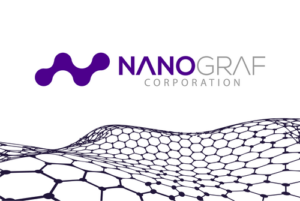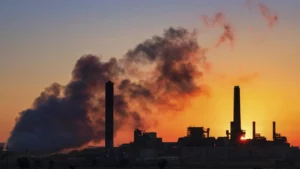This month, we’re highlighting the outcomes from COP28, Nanograf’s new production facility, the EPA’s methane regulations for the oil and gas industry, boom times in the solar industry, and more!
 Credit: IDDRI
Credit: IDDRI
COP28
COP28 Happened in the UAE. The big headline thing was that it was the first time there was a statement referencing shifting away from fossil fuels. This was heralded, although there wasn’t actually a commitment/plan/target/timeline associated with this move (it’s hard to get every country to agree on much). I think the most important thing about the statement is actually how little it commits to (after 30 years of climate conferences, we can’t get people to agree to non-binding declarations about the far future) – with any luck, this will fuel blowback and advocacy that can help put additional pressure on achieving more tangible progress in the future.
There was also the announcement of a loss and damage fund, which would help compensate poorer countries for the effects of climate change, administered by the World Bank. This is a step in the right direction, although I’m guessing it’ll face political challenges amassing even a fraction of the capital that will be needed.
Nanograf ramps up manufacturing
Evergreen portfolio company Nanograf opened their new Chicago manufacturing facility to produce battery materials for high performance lithium ion batteries which will be sold to the U.S. military. Good timing – Nanograf’s products serve as a substitute for graphite in batteries, which China (the main source of this material), just announced it would be restricting the supply of.
 Credit: Nanograf
Credit: Nanograf
EPA methane emission rule
The EPA announced new rules to reduce methane from oil and gas operations, ending routine flaring and moving towards leak measurement based on empirical data instead of relying on models. Basically this requires oil and gas operations to follow similar measurement and emissions mitigation requirements as other point source emitters are already required to follow.
It also includes an interesting new program that enables 3rd parties (like non-profits operating methane leak detection satellites) to contribute to leak monitoring and mitigation, which should help address some of the largest leaks (which may be in remote areas, unbeknownst to their facility operators).
More Sunshine
A recent Wood MacKenzie report highlighted that the US solar industry is expected to install 55% more capacity in 2023 compared to 2022, driven by utility scale deployments. Supply chain issues have also eased for solar modules, although now there are challenges related to the supply chain for related electrical equipment like transformers. The overall solar market is projected to grow in 2024, although not as quickly as 2023, and the residential market is expected to shrink by 12% as higher interest rates decrease demand in southern states which are more price sensitive (as they have lower electricity rates to begin with).
Where’s the money, man?
Bad news – Congress allocated billions of dollars to fund EV chargers, and none of it has been dispersed. That’s a mess, and a microcosm of some of the challenges that state and local government entities will face in trying to effectively implement new funding that is coming through at high velocity from the Bipartisan Infrastructure Law and the Inflation Reduction Act.
One silver lining is that, surprisingly, the consensus charging standard shifted in the last 6 months (to Tesla’s NACS standard), so hopefully the chargers the federal government actually does fund will be forward compatible with more EV models.
The most important number you’ve never heard of
The EPA updated its social cost of carbon to $190 (and is expected to increase in the future) – 4 times what it had been previously. This is sort of like the internal carbon price the government uses – it is how it evaluates whether more stringent regulation is cost effective. So, a higher (and more accurate) social cost of carbon means that the benefits associated with more aggressive climate action will outweigh the costs (relative to a lower value). Super wonky, super important, and presumably will be an important input into how we formally price carbon in the further future.
 Credit: The Hill
Credit: The Hill
Click here for carbon removal
Stripe announced an integration with Frontier that allows companies using the platform to buy carbon removal commitments to help fund those projects
Other News
Here in the Midwest, Minnesota and Michigan both advanced energy and climate legislation.
Canary Media highlights the concept of a “watt diet” in order to electrify a home that is limited by a 100 amp panel.
Energy Dome is using compressed CO2 and turbines to develop mechanical energy storage to smooth the variability in renewable energy generation. The company’s first commercial scale project is going to be built at the site of a retiring coal plant in central Wisconsin.